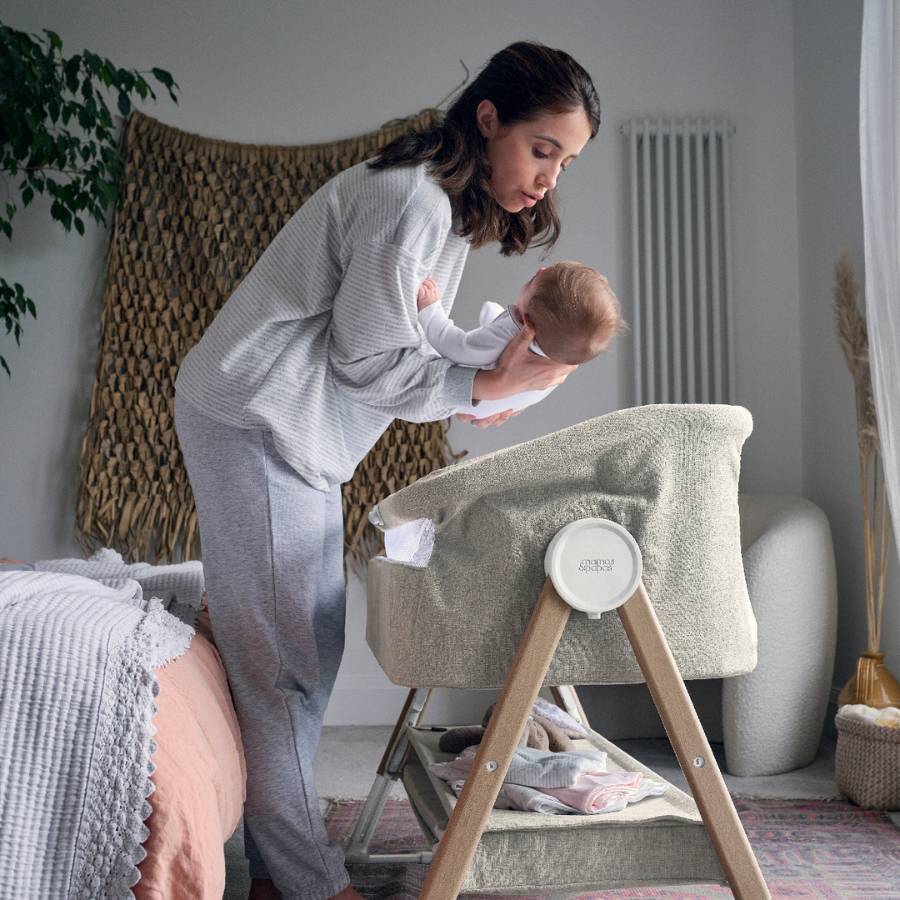
Baby Sleep Routines
Newborns
Newborns (up to 3 months) typically follow an unpredictable sleep pattern, making it difficult to set a structured bedtime routine. However, you can introduce simple rituals like dimming the lights, gentle swaddling, and soft lullabies. While newborns need frequent feeds, these calming activities help signal that it’s time to rest. Over time, your baby will begin to associate these cues with sleep, setting the groundwork for more defined routines later on.
1 Month Olds
At 1 month, babies are still adjusting to life outside the womb, so their sleep routine will remain flexible. However, focusing on a soothing wind-down routine is beneficial. Quiet play, gentle rocking, and a warm bath before bed can relax your little one and set the stage for longer sleep stretches. These small, peaceful activities can provide comfort and stability as part of their evolving bedtime ritual.

6 Month Olds
As your baby approaches 6 months, they may start to sleep for longer periods, making this an ideal time to establish a more structured baby sleep routine. A typical bedtime ritual could include reading a story, a quiet cuddle, and soft music. This is also a good age to introduce a more consistent bedtime, as babies start to develop their internal body clock. A steady, calming routine at this stage helps your baby distinguish between day and night, improving their sleep quality.
8 Month Olds
By 8 months, babies may begin experiencing separation anxiety or developmental milestones that disrupt sleep. To manage this, reinforce their bedtime ritual with comforting routines like a favourite soft toy, a familiar bedtime story, and a little extra snuggle time. These rituals offer reassurance and help calm any anxiety before sleep. Maintaining consistency with your baby sleep routine for 8-month-olds can be particularly helpful during these stages of growth and development.

Baby Sleep Routine Chart: 0-12 Months
| Age | Routine Focus | Suggested Activities |
|---|---|---|
| Newborns | Establishing initial calming cues and adapting to frequent feedings | Dimming the lights - Gentle swaddling - Soft lullabies - Frequent feeds and sleep cycles |
| 1 Month Olds | Developing a soothing wind-down routine | Quiet play - Gentle rocking - Warm bath - Soft lullabies |
| 3 Months Olds | Building consistency and gradually lengthening sleep stretches | Consistent bedtime - Gentle bedtime rituals - Incorporating short naps during the day |
| 6 Month Olds | Introducing a more structured bedtime routine with regular sleep times | Reading a story - Quiet cuddle - Soft music - Establishing a regular bedtime |
| 8 Month Olds | Adapting routines to accommodate developmental milestones and separation anxiety | Comfort item (e.g., soft toy) - Familiar bedtime story - Extra cuddle time - Consistent routine |
| 12 Months Olds | Reinforcing established routines while addressing increased mobility and possible separation anxiety | Engaging bedtime stories - Comfort items - Consistent routine with flexibility for active toddlers |

Adjusting Routines During Growth Spurts
Growth spurts can bring unexpected changes to your baby’s sleep pattern. Around 3 to 6 months, babies may experience disrupted sleep as their bodies grow. During these times, it’s important to remain flexible yet consistent with your baby’s bedtime routine. You may notice your baby waking more frequently or being more irritable at bedtime. Incorporating extra soothing activities like a gentle massage or additional cuddle time can help ease these transitions while still maintaining the core elements of their sleep ritual.

Soothing Techniques for Fussy Sleepers
If your baby tends to be fussy at bedtime, try incorporating some of these calming techniques into your routine:
- White noise: Use a white noise machine or soft lullaby playlist to create a peaceful sleep environment.
- Swaddling: For newborns, swaddling can help them feel secure and prevent startling, making it easier to settle.
- Gentle rocking: Rock your baby in your arms or in a rocking chair to soothe restlessness before laying them down.
- Comfort item: For older babies, introduce a soft toy or blanket as a comforting sleep companion.
- Dim lighting: Gradually dim the lights during the bedtime routine to signal it's time to wind down for sleep.

Parental Involvement in Bedtime Rituals
Consistency is key when it comes to establishing a successful bedtime routine, and parental involvement plays a big role in this. Whether one or both parents participate in the nightly ritual, creating a predictable and comforting bedtime routine fosters security for your baby. Sharing roles—such as one parent reading the bedtime story while the other sings a lullaby—can provide consistency and strengthen the parent-child bond, making the transition to sleep smoother for everyone.










